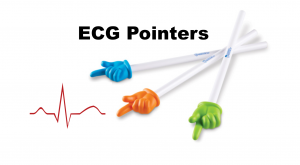Today on the emDOCs cast Brit Long interviews Zachary Aust on a performing under pressure.
Episode 122: Performing Under Pressure
Understanding Crisis Performance
- Myth of the “Clutch Performer” – debunked
- High pressure reduces performance
- Data shows we fall to the level of our training
- No one is immune—everyone is affected
How Our Brain and Body Reacts
Threat vs. Challenge Assessment
Threat-Demand greater than resources
- Fight, flight, or freeze
- Common in medical settings: freeze response most likely
Challenge -Resources greater than Demand
- Viewing crisis as challenge (not threat) improves performance
Physiological Heart Rate Stress Zones
- White zone: Resting HR, low cognition
- Yellow zone: Optimal arousal and performance
- Red/Black zone: Severe cognitive and motor breakdown (vomiting, tunnel vision, syncope)
- Goal: Stay in the Yellow zone
Performance Breakdown Under Stress
- Fine motor skill loss (e.g., difficulty with tools like central line wire)
- Attention narrowing (tunnel vision, auditory exclusion)
- Time distortion (e.g., excessive BVM squeezing)
- Working memory reduction (cognitive bandwidth drops)
- Decision-making errors (heuristic lock-in, inflexible thinking)
- Team dynamics suffer (leader stress impacts the whole team)
Extending the Optimal Performance Zone
- “Goldilocks Zone” of arousal = optimal performance range
- Can be expanded with training
- Not a fixed peak—can become a broader, stable plateau
Just In Case Preparation
Concept Introduction: Just In Case Preparation
- Analogy: Think of it as rehearsal – both physical and mental
Physical Rehearsal: Training Crisis Procedures
Training Plan: Goal: Over learn Procedures for Automatic Response
- Choose high-stakes procedures (e.g., Intubation, Cricothyrotomy, Central Lines, Minnesota Tube)
- Break It Down
- Incrementalization (Concept by Rich Levitan)
- Break procedure into small, sequential steps
- Steps should be:
- Best practice
- Reliable
- Reproducible
- Steps should be:
- Identify Micro-skills
- Match physical skills to each step
- Examples:
- Syringe disconnect in Seldinger technique
- Index finger movement during Cricothyrotomy
- Examples:
- Focus practice on these micro-movements
Translating Practice into Performance: Deliberate Practice
What is Deliberate Practice?
- Choose a specific incremental step to improve
- Give it full attention
- Attempt the task
- Get immediate expert feedback on:
- What went right
- What went wrong and why
- Repeat and refine the step
- Note: It feels slow and uncomfortable — that’s real learning
The Risk of False Reinforcement: BDGO & BTGO
A. Definitions:
- BDGO: Bad Decision, Good Outcome
- BTGO: Bad Technique, Good Outcome
- False reinforcement of poor habits if outcomes are favorable despite errors
B. Real-World Risk:
- Learners may believe they did the procedure correctly just because the result was successful
C. Solution Example:
- Use standard geometry video blades and objective visual aids to:
- Assess actual technique
- Avoid reinforcing incorrect habits
Mental Rehearsal
1. Introduction: Mental Preparation as Rehearsal
- Just like physical practice, mental rehearsal ensures we’re ready before the chaos hits.
- Mental rehearsal = retrieval practice
- Recognizes that decision-making and working memory will be throttled under stress.
2. Building Mental Models
- Pre-plan how you’ll handle critical situations using best practice-based mental blueprints.
- Examples:
- Crashing anaphylaxis
- Afib with RVR + soft BP
- Drug choices for status epilepticus
- Ventilation strategies for asthmatics
3. Pre-Made Decision Paths
- Avoid decision paralysis during crises.
- Design decision trees with built-in reassessment checkpoints, e.g.:
- Before moving to CT
- Post-intubation reassessment
- WHEN WILL I CRIC
4. Troubleshooting and Decision in Advance
- Example: Airway Plan
- Start with standard geometry + bougie
- Use video/direct laryngoscopy as needed
- Have a backup plan (e.g., hyper-angulated blade, supraglottic, cric)
- SPO2 trigger = pre-planned action (e.g., place supraglottic device at 92%)
- Team sharing of mental models:
- Announces intentions
- Aligns team
- Offloads cognitive burden
5. Cognitive Offloading
- Mental overload is real – free up bandwidth for diagnostic reasoning.
- Use external tools as second brains:
- Checklists
- Drug cards
- Braslow tapes
- These tools support, not replace, expertise — use them proactively.
- Be familiar with them before you need them (e.g., don’t first open Braslow tape during a pediatric code)
6. Strategy vs Logistics
- Strategy = Clinical decision (“I need a cordis”)
- Logistics = Execution (“Where is the kit? How do I set it up?”)
- Mentally rehearse logistics in advance: visualize gathering and using supplies
- This reveals gaps in knowledge or prep before it counts
7. Emergency Reflex Action Drills (ERADs)
- Concept by Weingart, Laurie, and Cliff Reid
- Fixed action patterns for time-sensitive emergencies
- Goal: Bypass active cognition during crisis
- Examples:
- About to die hypotension → Cart-Epi-Half
- Drop-off code → Compressions, Bag, Pads
- Sudden unconscious STEMI → Pads-Rhythm-Shock
8. Designing Your Own ERADs
- Identify a time-sensitive emergency
- Design an evidence-based response
- Use guidelines or expert consensus when no hard data exists
- Ask: What are the critical first steps that buy time?
- Incorporate logistics: Know where things are and how to access/use them
- Train your brain: If you have to think about your ERAD in the moment, it won’t work
9. Visualization
- Leverage your brain’s internal simulator:
- Activate the same pathways as physical practice
- Step-by-step, immersive mental walk-throughs
- Works for procedures and full resuscitation scenarios
- Example: Visualize being the trauma team leader
10. Fear List: Let Fear Guide Preparation
- Identify what scares you the most — high-risk, low-frequency events
- Make a list
- Turn these into your preparation priorities
11. Make It Happen: Training Schedule
- Build rehearsal into your life
- Schedule practice outside shifts (calendar event, phone reminder)
- Use tools like Anki for spaced repetition:
12. Final Thoughts
- Mental preparation is not about removing thinking — it’s about thinking ahead.
- The combination of mental models, ERADs, logistics practice, and cognitive offloading tools allows you to perform under pressure without needing to “figure it out” in the moment.
Just In Time
- “Just in time” techniques for chaotic moments
- Trial these during high-stress times: sim lab, busy shifts, real resuscitations
- Must be practiced to be effective
- Based on performance psychology in high-stakes environments
4-Step Performance Process (Lauria et al., 2017)
Beat The Stress Fool
- BREATHE
- Regain control by controlling breath
- Stress leads to shallow breathing—must counteract this
- Controlled Breathing Pattern:
- Inhale, Double Exhale Time
- Inhale through the nose (e.g., 5 seconds)
- Exhale through pursed lips (e.g., 10 seconds)
- Can also use tactical/box breathing (4-4-4)
- Regulates heart rate, calms body and mind
- Practice b
- Inhale, Double Exhale Time
- SELF-TALK
- Internal dialogue
- Types:
- Motivational/self-affirmation: “I’ve trained for this”
- Instructional: Step-by-step mental model
- Reframing: Change your perspective on a stressful situation
- Incrementalization: Break into small, doable steps
- Guidelines:
- Use short, positive, present-tense phrases
- Say them intentionally and repeat
- 3rd Person
- SEE (Visualization)
- Mentally simulate the procedure
- Engages the same neural networks as real action
- FOCUS WORD
- A cue word to bring you back into a flow state
- Examples: Focus, Smooth, Breathe
- Condition yourself to use this during calm, controlled moments so it becomes a reset trigger in chaos
Beat The Stress Fool
Post-Crisis: Managing the Aftermath
- Parasympathetic Backlash
- After adrenaline, body crashes → situational awareness drops
- Don’t “drop the mic” after a win (like an intubation)
- Return to your primary survey/checklist
- Use cognitive rally points
- Reassess patient thoroughly
- After if no one is critical- Recharge
- Water
- Snack
- Caffeine
- Incomplete Adrenaline Dump
- When anticipation doesn’t lead to action (e.g., code canceled)
- Body still flooded with stress hormones
- Must actively down regulate:
- Move (walk, pushups, stretch)
- Go Outside
- Keep doing controlled breathing
- Let adrenaline “burn off” constructively
Resources:
Stimulus Podcast- 115-Zero Warning | Scott Weingart on frameworks for no-notice critical patients
Stimulus Podcast-123- How to Create a Team in 10 Seconds
Mike Lauria- Emergency Reflex Action Drills
Emergency Reflex Action Drills
Mike Lauria. The Necessity of Emergency Reflex Action Drills. EMCrit Blog
The Necessity of Emergency Reflex Action Drills
EMCrit RACC Podcast 220 – Beat the Stress Fool (BtSF) with Mike Lauria — Just In Time Performance-Enhancing Psychological Skills.
Podcast 177 – Chris Hicks on the Fog of War: Training the Resuscitationist Mindset.
EMCrit 177 – Chris Hicks on the Fog of War: Training the Resuscitationist Mindset
Scott Weingart. EMCrit Podcast 49 – The Mind of a Resus Doc: Logistics over Strategy.
EMCrit 49 – The Mind of a Resus Doc – Logistics over Strategy
Scott Weingart. Podcast 164 – The Day I Didn’t Use Ultrasound by Mike Mallin.
EMCrit 164 – The Day I Didn’t Use Ultrasound by Mike Mallin
Scott Weingart. Podcast 99 – Combat Aviation Paradigms for Resuscitationists.
Podcast 99 – Combat Aviation Paradigms for Resuscitationists
Paper Review – The Human Factor
Performance Under Pressure (how to manage stress) – First10EM
Beyond ACLS: Cognitively Offloading During a Cardiac Arrest – REBEL EM – Emergency Medicine Blog
EMCrit 293 – The Jerk & Check, Functional Heuristics in Resuscitation Project (MotR)
EMCrit 339 – Decisions, Decisions, Decisions with Andrew Petrosoniak
The Resuscitationist’s Mindset
Episode 86: Scott Weingart MD FCCM from EMCRIT.org on Maximally Aggressive Care
EMCrit 163 – MotR – The Post-Resuscitation – Recovery after Resus
Mental Practice: Applying Successful Strategies in Sports to the Practice of Emergency Medicine
https://pubmed.ncbi.nlm.nih.gov/38244027/
Psychological Skills to Improve Emergency Care Providers’ Performance Under Stress
https://emcrit.org/wp-content/uploads/2017/05/PEP-under-Stress.pdf
The Human Factor: Optimizing Trauma Team Performance in Dynamic Clinical Environments
https://pubmed.ncbi.nlm.nih.gov/29132571/
Cric Training
https://emcrit.org/emcrit/how-to-teach-surgical-airways/
Books
Performing Under Pressure: The Science of Doing Your Best When It Matters Most by Hendrie Weisinger J. P. Pawliw-Fry
https://www.amazon.com/dp/B00N6PESWC/ref=dp-kindle-redirect?_encoding=UTF8&btkr=1
On Combat, The Psychology and Physiology of Deadly Conflict in War and in Peace by Dave Grossman, Loren W. Christensen
https://www.amazon.com/Combat-Psychology-Physiology-Deadly-Conflict/dp/0964920549
Peak: Secrets from the New Science of Expertise by Anders Ericsson, Robert Pool
The Emergency Mind: Wiring Your Brain for Performance Under Pressure -Dan Dworkis
https://www.amazon.com/Emergency-Mind-Wiring-Performance-Pressure/dp/B094GY88RK/ref=tmm_pap_swatch_0






